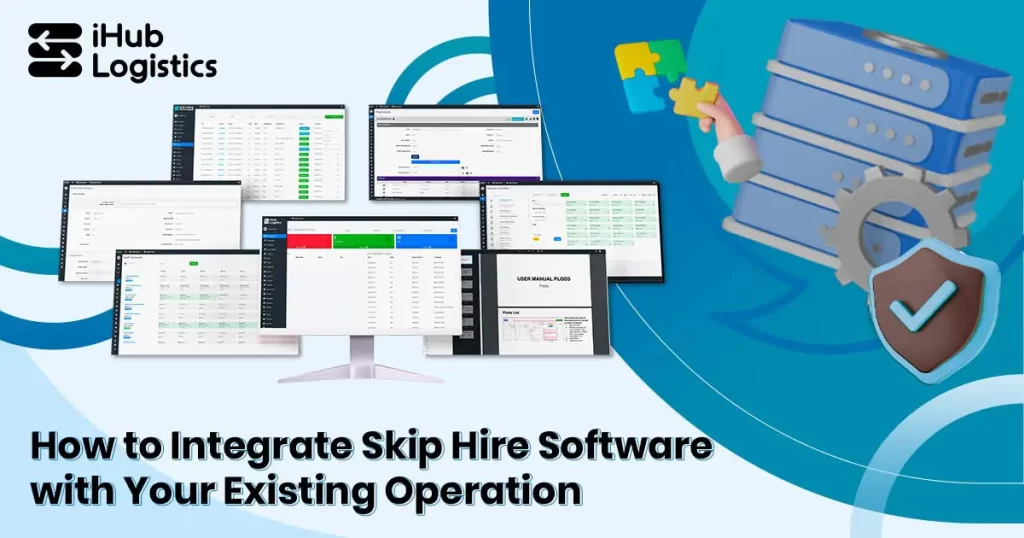
Integrating new software into an established business operation can seem daunting. The process involves changing long-standing practices and requires staff to adapt to new ways of working.
There’s also the challenge of ensuring that all data is accurately transferred and that the system functions smoothly within the existing infrastructure.
This process involves careful planning and coordination, especially when the software is tailored to fit specific business needs.
Don’t be scared, with the right approach and a clear plan, the transition should be smooth and relatively quick.
For example, with our WasteVantage software for skip hire, the entire process typically spans between 8 to 16 weeks (depending on how big your operation is). It will allow you to transform your operations without significant downtime.
Let us guide you through each step, ensuring you set the expectations to achieve a successful skip bin hire software integration.
1. Software Demonstration (1 week)
Before committing, it’s essential to see the software in action. Schedule a demonstration with the WasteVantage team to understand the software’s capabilities and how it can be tailored to your specific operational needs.
This step is crucial for setting expectations and envisioning how the software will enhance your current processes.
2. Initial Assessment and Customisation Planning (2-4 weeks)
Once you decide to proceed with WasteVantage, the next step is to conduct an initial assessment of your current operations alongside the software provider. This involves identifying the specific areas where customization is needed to fit your business model.
Simultaneously, the customization process begins, adapting the software to meet your unique requirements, such as specific workflows, data fields, and user interfaces.
This step is your foundation for integration, as it highlights the specific needs the new software must address.
3. Data Migration and System Customization (2-4 weeks)
During this phase, your existing data — from customer records to transaction histories — is carefully migrated to WasteVantage. Data migration is a critical component of the integration process.
This step is performed concurrently with system customization, ensuring that as the data is transferred, it is being configured to function within the customized parameters of the new software.
4. Integration Testing (4-6 weeks)
This phase tests both the migrated data integrity and the functionality of the customized features. It’s a time to identify and resolve any issues. It’s to ensure the software fully supports your operational needs without causing disruptions.
Occasionally, this phase may extend beyond the initial timeframe as additional customisation might be necessary when certain elements do not perform as expected. This iterative process ensures that the software precisely meets your specific operational requirements before full deployment.
Additionally, this phase involves training staff to familiarise themselves with the platform. Make sure they are comfortable and proficient with its functions and features.
We need to ensure that the software works harmoniously within your existing infrastructure and team.
5. Go Live (1 week)
Time to implement the software fully across your business operations. It’s advisable to choose a quieter period for the go-live phase to minimize the impact of any unexpected issues.
Keep us on hand to address any immediate technical challenges that arise. Maintain a close communication with us.
6. Support and Updates (ongoing)
Post-implementation, ongoing support from the WasteVantage team is crucial. Regular updates and consistent technical support ensure that the software continues to meet the evolving needs of your business.
We keep the software up-to-date to benefit from the latest features and security enhancements.
7. Feedback Loop (ongoing)
Finally, establish a feedback routine. Encourage your team to report back on how the software is performing in real scenarios. Use this feedback to continuously improve processes, tweak features, and request further adjustments as needed.
Integrating new skip hire software doesn’t have to disrupt your business. WasteVantage can further streamline your business processes and boost customer satisfaction.
By following these steps, you can ensure a smooth transition and a quick adaptation period. With a well-executed integration, your operation can become more efficient, responsive, and ready to meet the demands of modern waste management challenges.
As you move forward, remember that the success of this integration depends not only on the technology itself but also on the ongoing partnership between your team and our team.
Take the Next Step
Are you considering integrating software into your skip hire operation but unsure about the details? We’re here to help.
Whether you need more information or want to hear real-case examples of the integration process, our team is ready to assist you.
Contact us today to discuss how WasteVantage can transform your business operations and set you on the path to greater efficiency and success.
